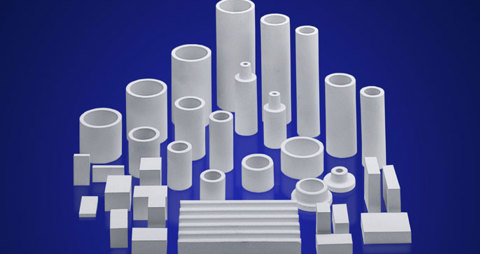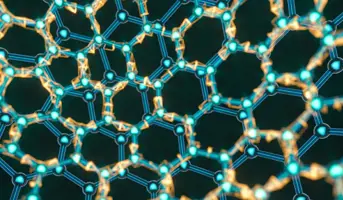Technical Ceramics

What is a Ceramic?
Ceramics are often defined by what they are not. Ceramics are neither metallic nor organic (e.g., polymeric). They are typically harder, more chemically inert, and capable of withstanding higher temperatures versus metals and polymers. Generally, ceramics exhibit the combination of high strength and low strain (e.g. high rigidity) whereas polymers typically exhibit lower strength and high strain.

What are Technical Ceramics?
The term technical ceramic is often used interchangeably with the terms engineered ceramics, advanced ceramics, precision ceramics, and high-performance ceramics. The simple meaning is to differentiate these ceramics from “traditional ceramics” that are made from naturally occurring materials such as clays, often with minimal post-processing.
Examples of articles made from these traditional ceramics include pottery, tableware, clay bricks, clay tiles, and cement. In contrast, the ingredients of technical ceramics are highly purified, refined to control particle size and shape, and subsequently combined with other ingredients in tightly controlled recipes. After the shaped articles are formed, they are sintered or fired under vacuum or controlled atmospheres. Often specialised post firing machining is required to achieve specified final article tolerance.
What are the Types of Technical Ceramics?
There are many ways of classifying types of ceramics. One common method is to group ceramics into either Oxides, non-Oxides, or ceramic composites.
Oxide ceramics include the families of ceramics known as alumina (aluminium oxide or Al2O3), zirconia (zirconium oxide or ZrO2), silica (silicon oxide or SiO2), yttria (yttrium oxide, Y2O3) and other metal oxide-based materials such as silicates and magnesia. These are non-metallic, inorganic compounds that include oxygen in their chemical structures.
Oxide ceramics may be mixed within another oxide ceramic to form a mixed dispersion such as in the case of zirconia toughened alumina (ZTA) or alumina toughened zirconia (ATZ).
Non-oxide ceramics include the families of ceramics known as aluminium nitrides (AlN), silicon nitrides (Si3N4) and various carbides such as silicon carbide (SiC). These are also non-metallic, inorganic compounds that include either nitrogen or carbon in their chemical structures.
Ceramic composites include materials where the matrix is either ceramic (ceramic-matrix composite or CMC), metallic (metal-matrix ceramic or MMC), or polymeric (polymer matrix composite or PMC).
In a CMC, the non-matrix material may be the same ceramic as the matrix, but in a fibre form, such as is the case with alumina-alumina composites (often known as Ox-Ox) or silicon carbide-silicon carbide composites (often known as SiC-SiC). The non-matrix material may also be a metal, as is the case reaction-bonded silicon carbide infiltrated with silicon metal (often referred to as SiSiC). Concrete or cement is also an example of a CMC. Ceramics can also be infiltrated with organic materials such as carbon.
In MMCs and PMCs, the ceramic takes the form of a long or short fibre or particulate such as powder. Cemented oxides and cemented carbides are examples of MMCs. Titanium dioxide (TiO2) and silica (SiO2) are examples of ceramic fillers often used within polymers.
What are the Advantages of Technical Ceramics Versus Metals and Polymers?
Typically, ceramics are selected for their hardness, compressive strength, wear or abrasion resistance, thermal resistance, thermal insulation (in the case of oxides) or thermal conductivity (in the case nitrides or carbides), electrical resistance, chemical resistance, or non-wetting properties.
Can Brazing be used on Ceramics?
When a ceramic lacks a particular property, such as the weldability of metal, joining a ceramic part with a metallic part either adhesively, mechanically, or via brazing to produce a ceramic-metal assembly or ceramic-to-metal seal can provide a solution that benefits from the combined attributes of both ceramic and the metal. Examples of such assemblies include hermetic electrical feedthroughs for medical implants such as pacemakers, feedthroughs for medical x-ray tubes, and high-temperature sensors for aircraft turbine engines.



